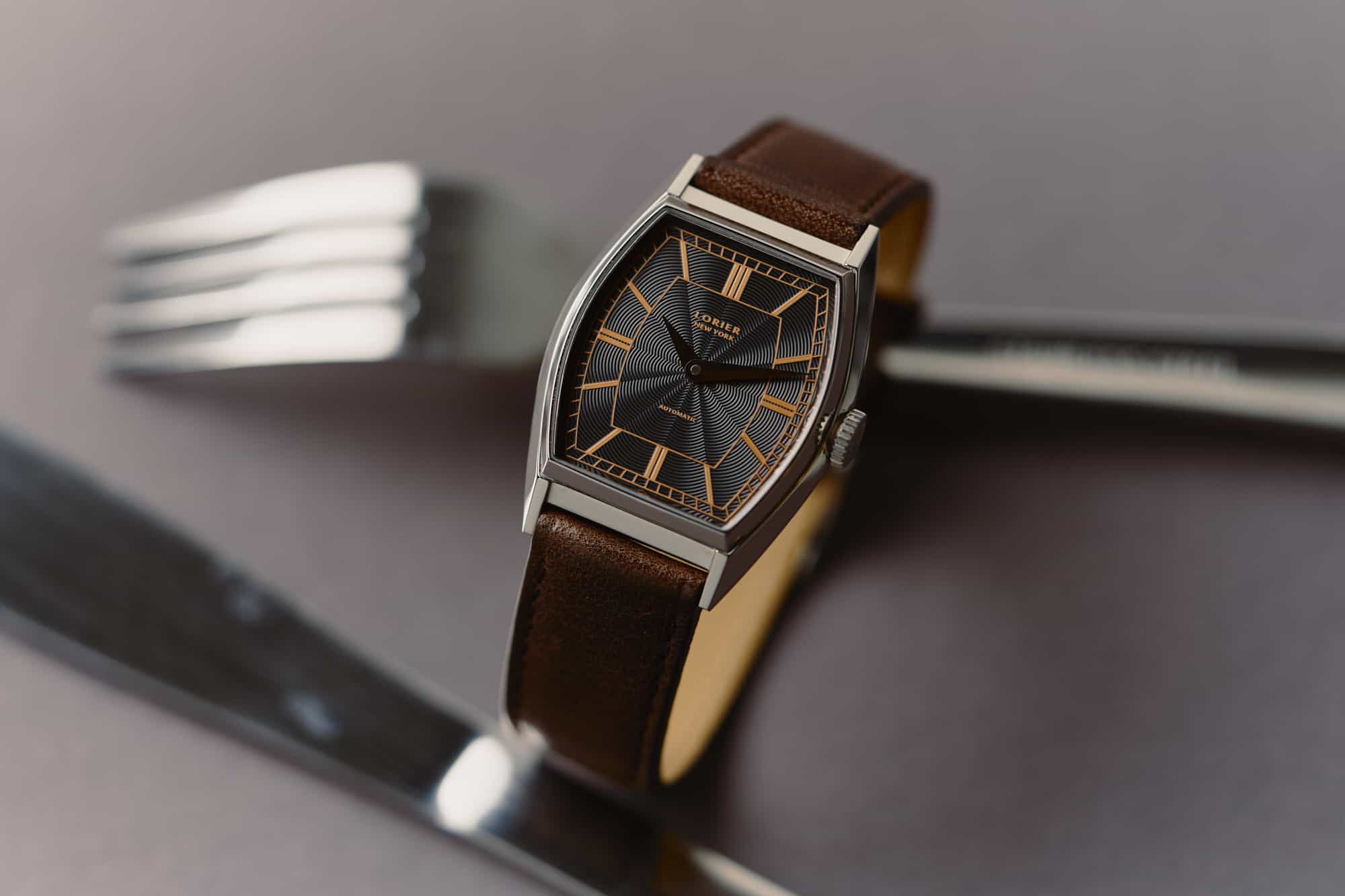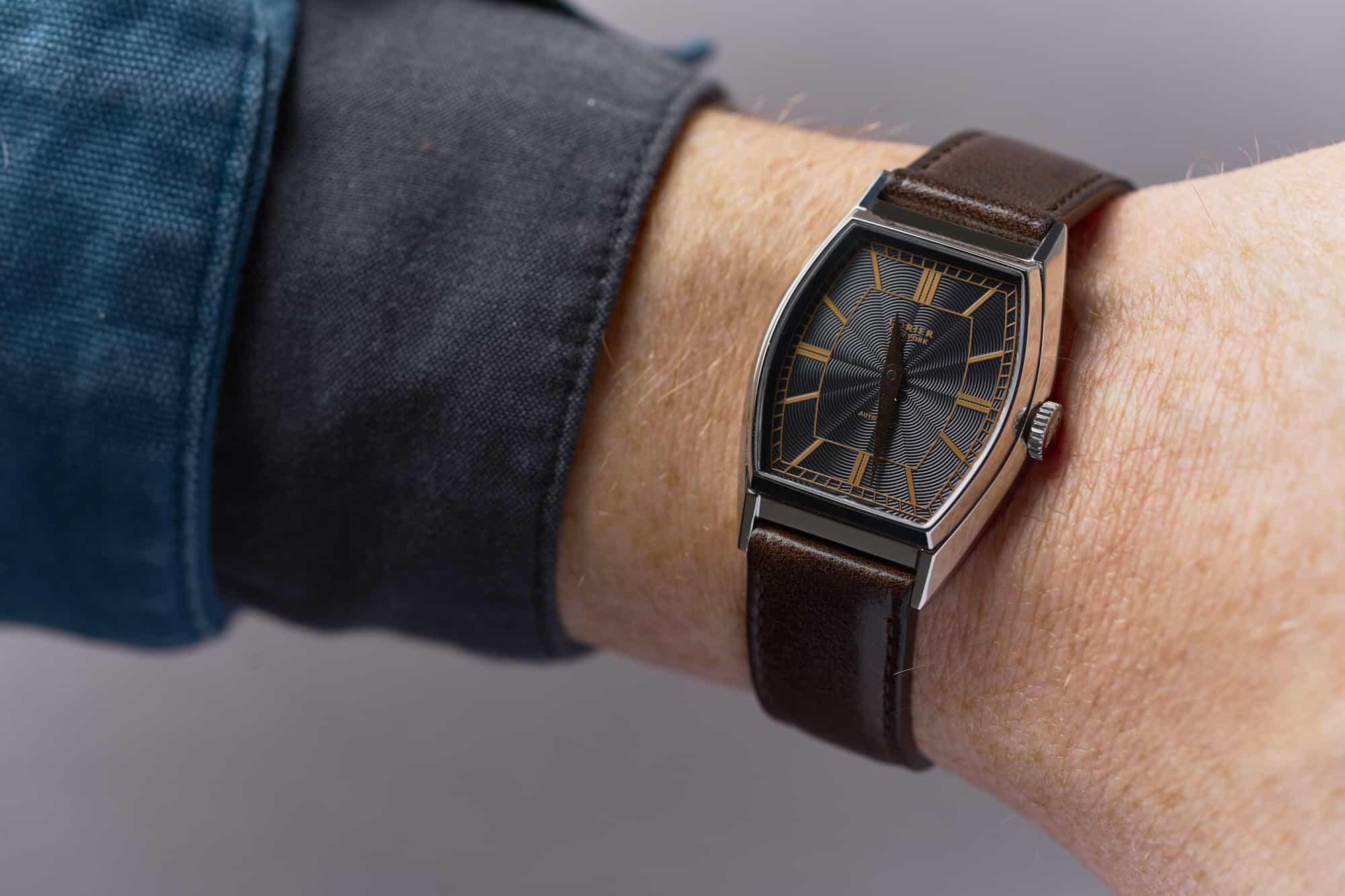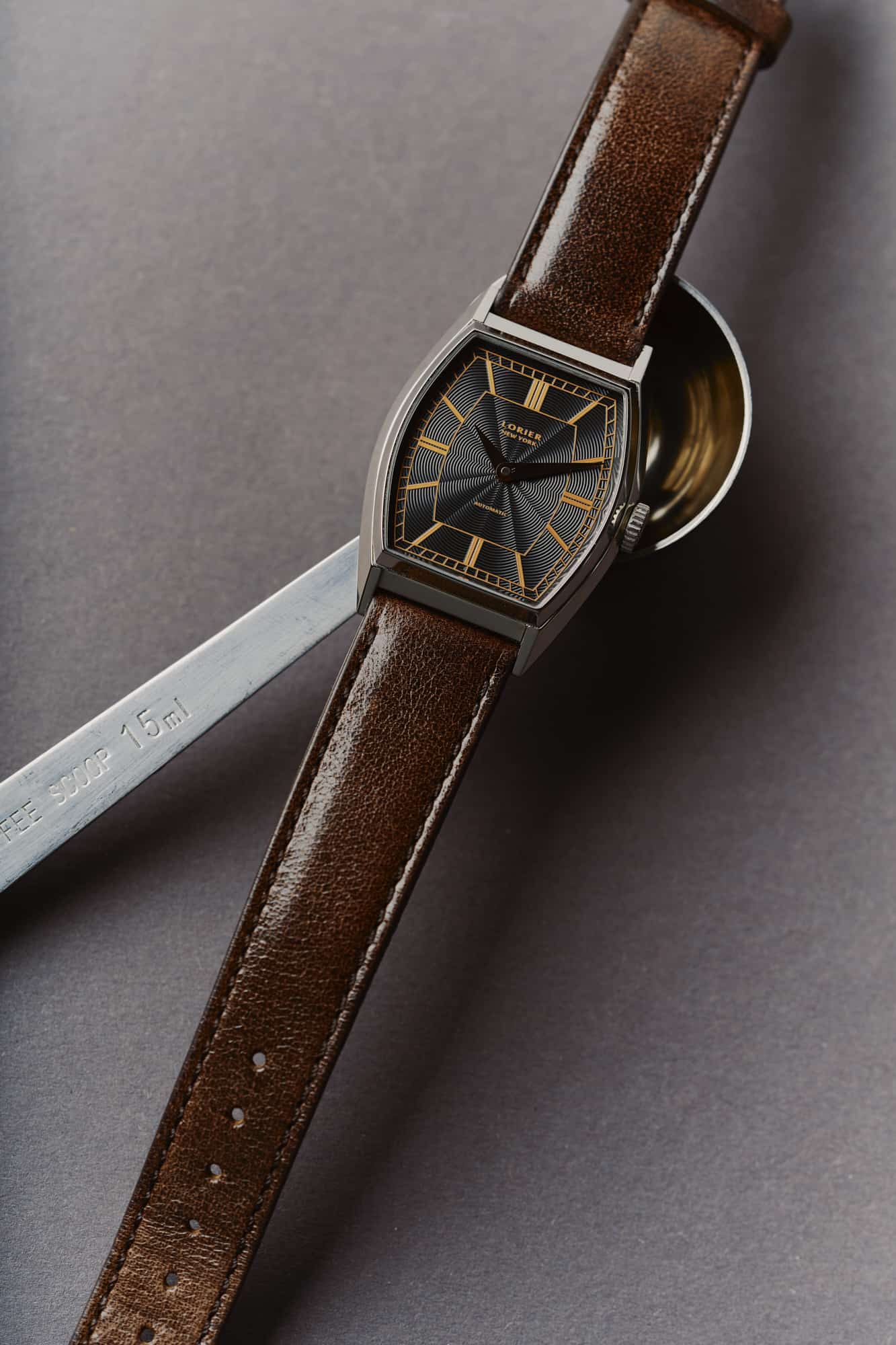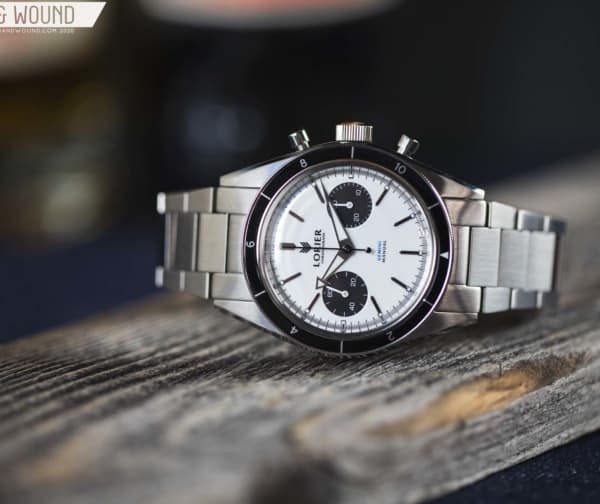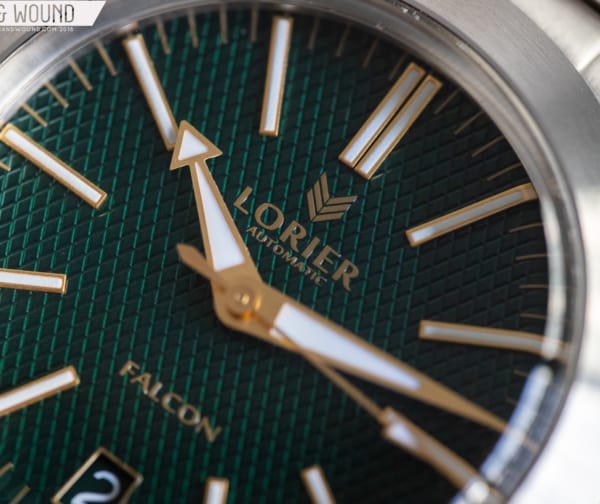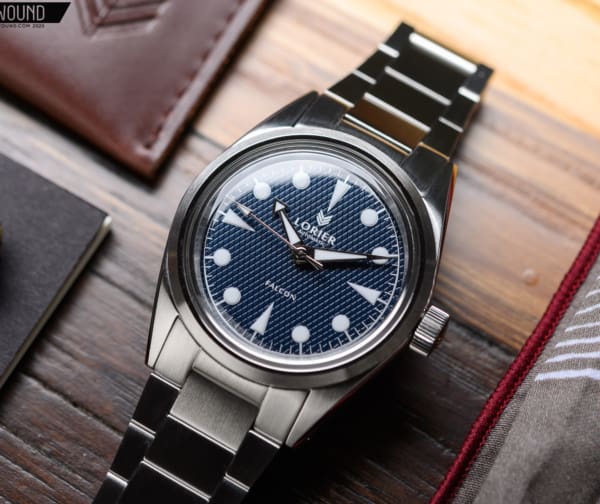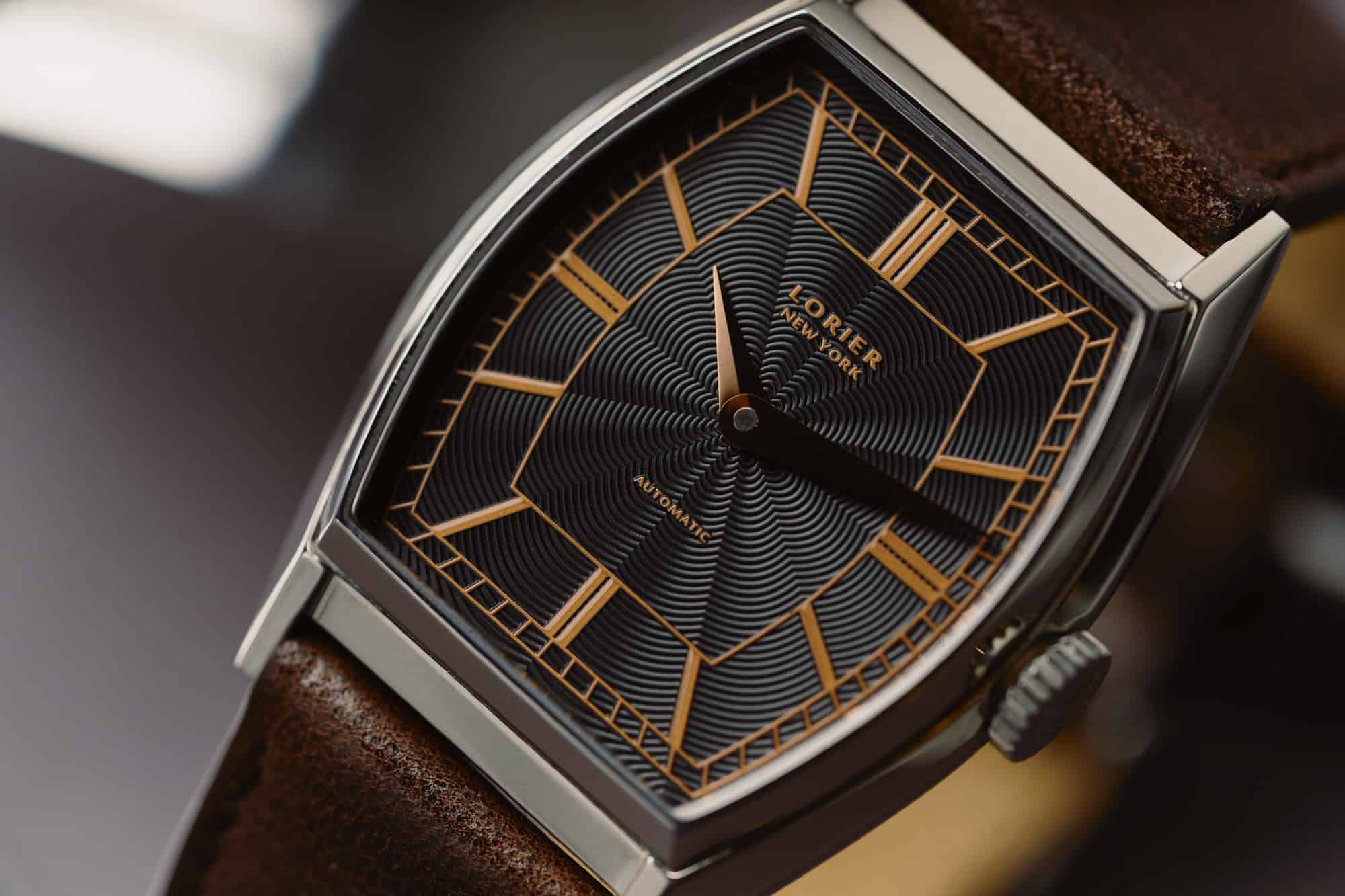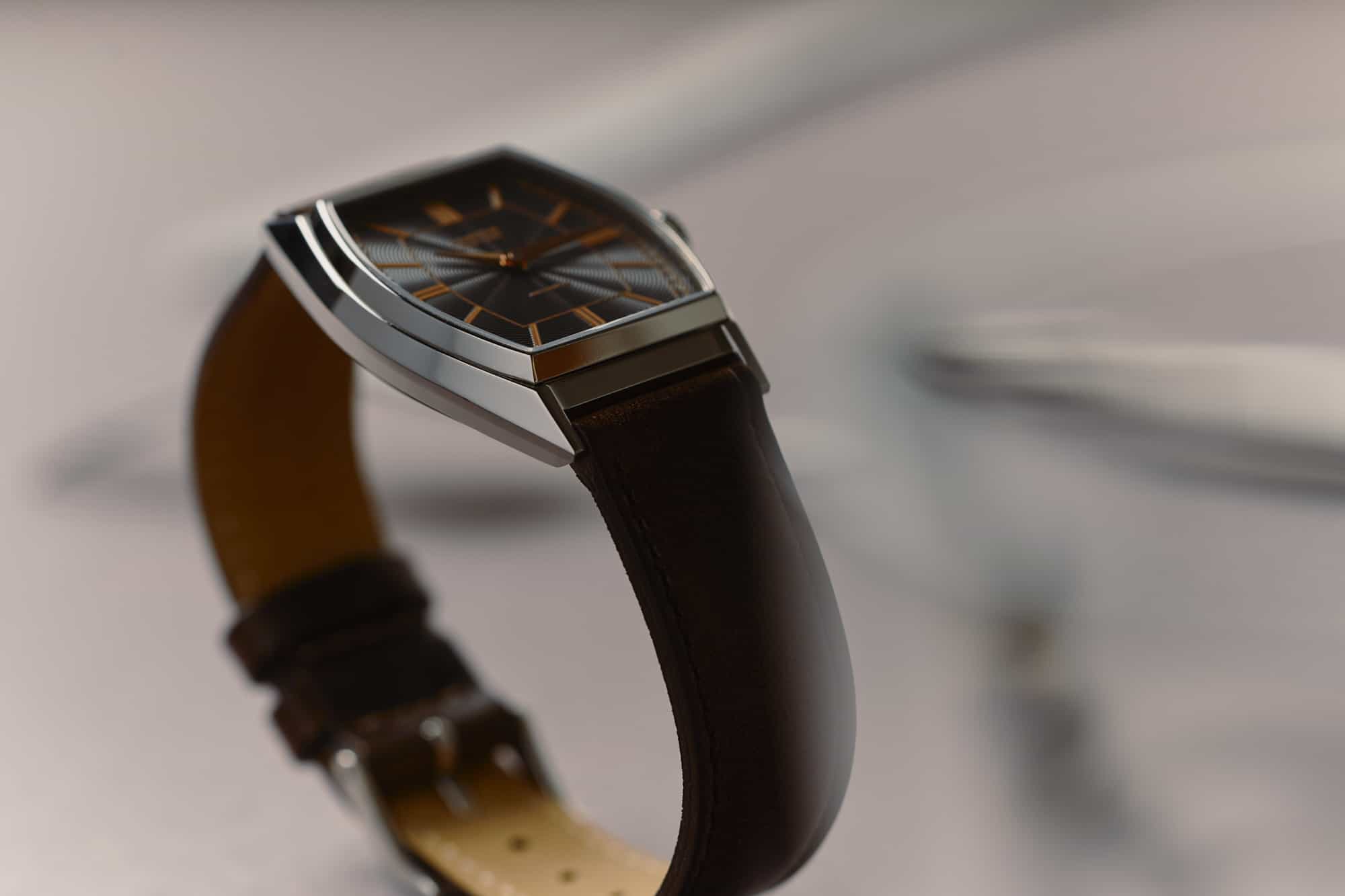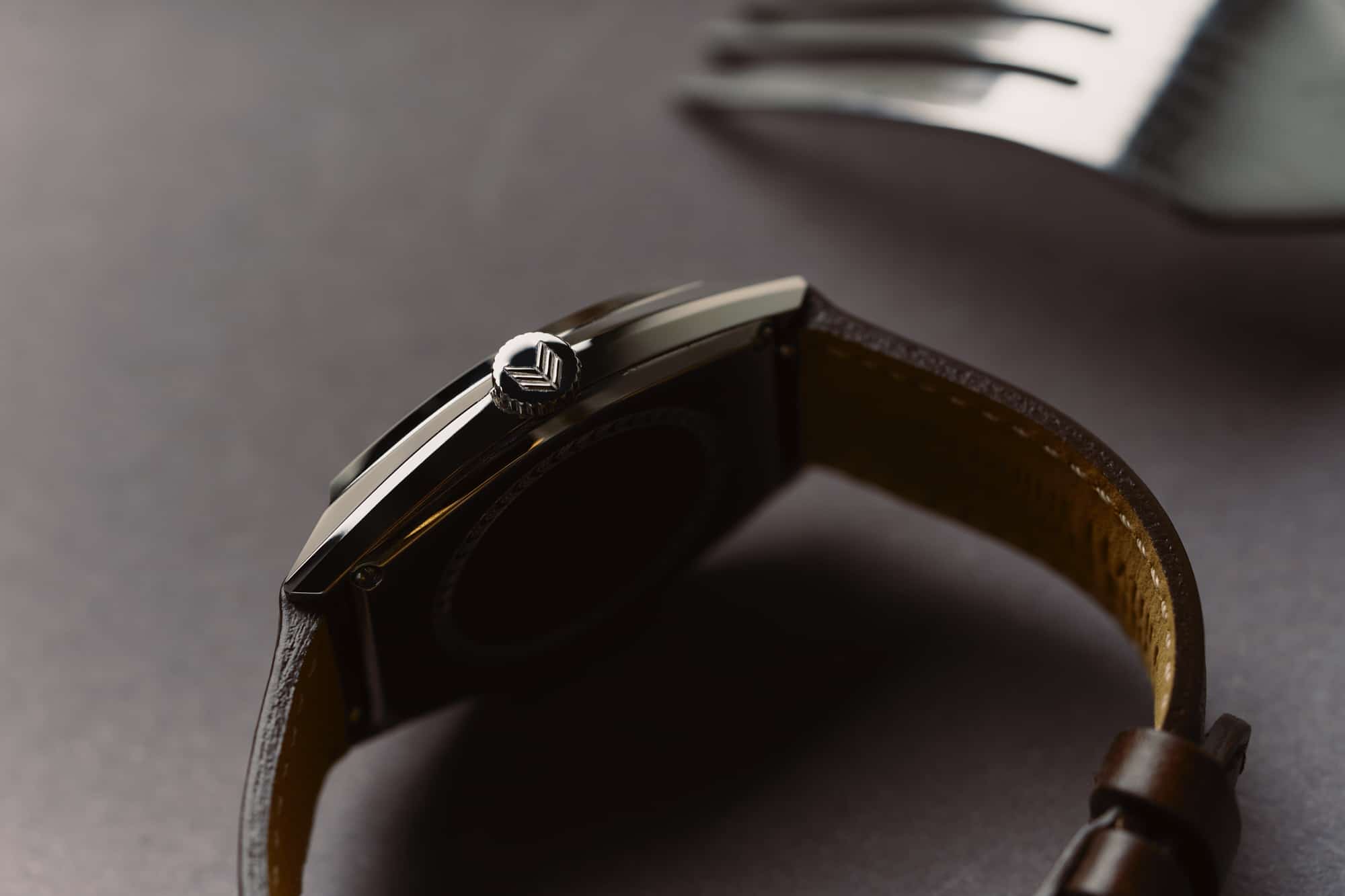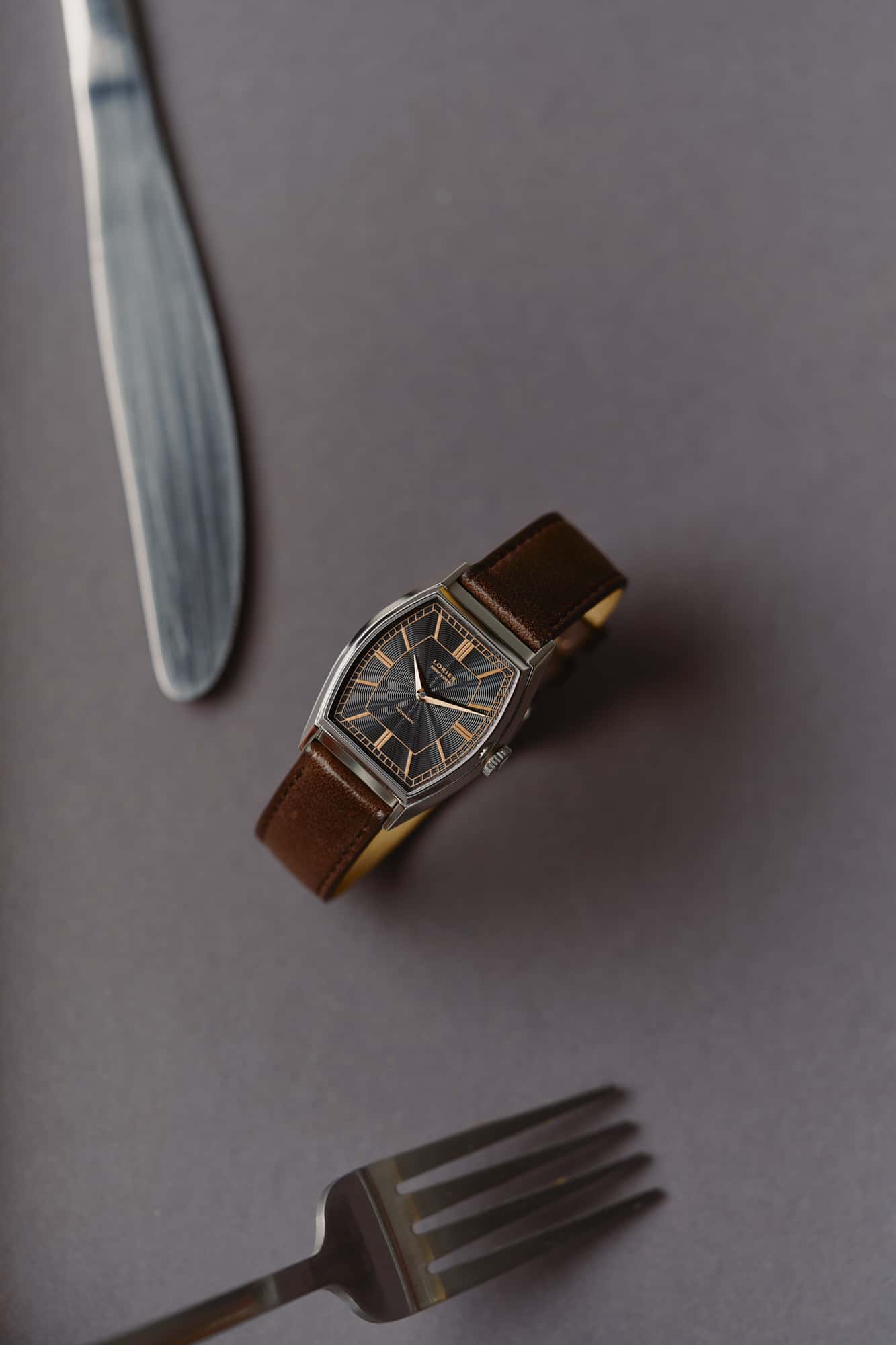My wardrobe has been extremely casual for years thanks to working from home even before the pandemic hit, but in a previous life, I had to wear traditional business casual clothes to a real, physical office. Usually that meant a sport coat of some kind, and it absolutely never meant jeans, which seem to be an office staple now. There are times when I miss the little decisions you have to make when you dress a step above casual. I make none of those decisions now – every casual button down shirt in my closet goes with every pair of jeans I own. I imagine many have a similarly decision free morning routine. The one exception, of course, is the watch. And even if the rest of your attire is somewhat lacking in polish, putting on a watch like the Zephyr can serve as a little reminder of a forgotten part of yourself. It adds a bit of a spark – it’s a nice feeling.
On paper, the Lorier Zephyr is a fairly specific type of dress watch with heavy Art Deco influences, in a somewhat unusual style of case. But as I alluded to at the top of this review, the category you put this watch in really doesn’t matter. It doesn’t matter for any watch. What matters, more than anything else, is the way the watch makes you feel when you wear it. Some watches might not make you feel much of anything, and that’s actually OK. There are times (maybe it’s actually most of the time) when you should really be focused on other things besides the watch you’re wearing and the bond you’re creating with it at that very moment. I mean, we have jobs, families, and other things we should all probably be focused on.
But let’s be honest: if you’re reading this, you’re probably more than a little bit interested in watches as a hobby, and putting on something like the Zephyr is definitely going to make you feel something, even as it, yes, disappears on the wrist. In my case, it made me feel just a little bit elevated from the minimal effort baseline that is my current day-to-day wardrobe. It reminded me of a time in my life when shining and polishing my dress shoes was a cherished part of my Sunday morning routine, and made me realize that it doesn’t actually take much at all to connect to that feeling again.

I found the Zephyr to be completely charming, and it has me excited to see what Lorier might be planning for the future. Since introducing the Zephyr earlier this year, they’ve also launched a new version of the Gemini with a new bracelet and more refined proportions, and among the dial options you’ll find one in bright canary yellow. They’ve also made a small run of Zephyrs in a shade of blue that is not too dissimilar from that shade most often associated with a famous NYC jeweler. I would never accuse Lorier of being overly sober or conservative in their designs, but between the Zephyr and these new experiments with color, the brand seems to be in a more playful mood, finally ready to get dressed up and have a little fun. As a long, difficult period of precisely the opposite comes to an end, this is a welcome energy. Lorier









 Featured Videos
Featured Videos




